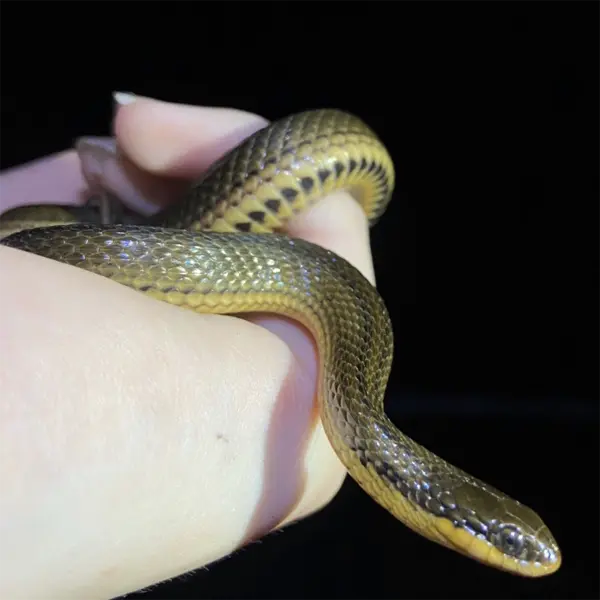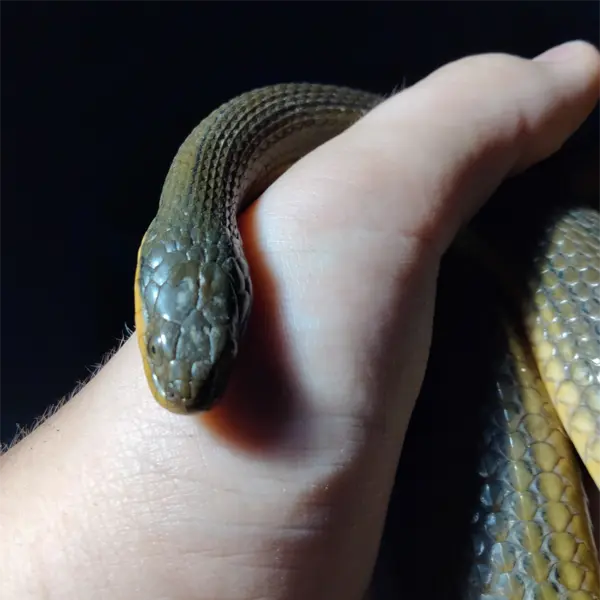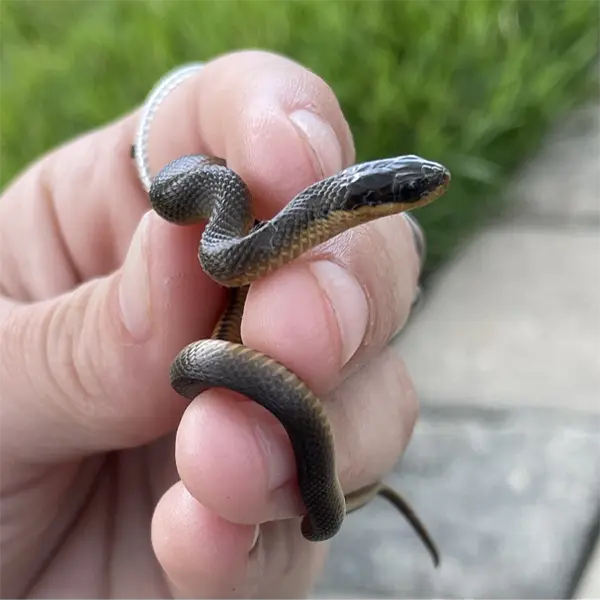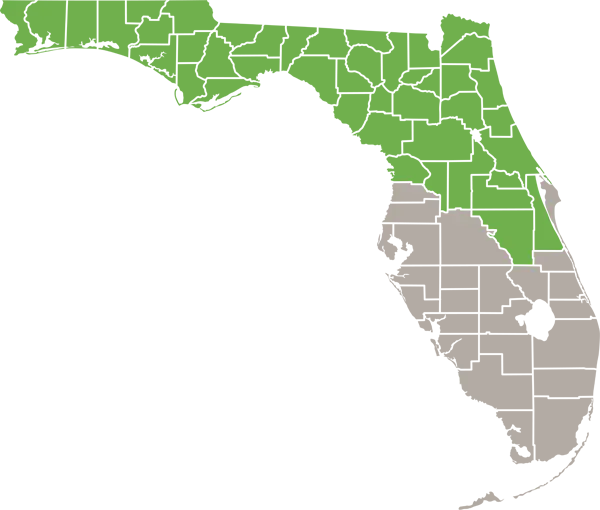Glossy Swampsnake
- Scientific Name
- Liodytes rigida
- Also Known As
- Glossy Crayfish Snake
- Range
- Northern and Central Florida
- Diet
- Crayfish
- Life Expectancy
- 9 Years
Quick Links
The Glossy Swampsnake in Central Florida
The glossy swampsnake (Liodytes rigida) is a nonvenomous colubrid species indigenous to the subtropical wetlands of central and south Florida. Often overlooked due to their cryptic habits, glossy swampsnakes play an important role as both predator and prey in fragile aquatic ecosystems. This article provides identification tips, biology facts, and information on glossy swampsnake habitat and diet in central Florida.
Appearance and Identification
Glossy swampsnakes can be confused with the closely related southern water snake (Nerodia fasciata pictiventris). However, southern water snakes have bands instead of blotches and a single anal scale. The belly colors also differ, with southern water snakes having bold dark markings on a pale background.
Maturation Rate
Glossy swampsnakes reach reproductive maturity at 18-24 months of age. They breed in their second spring after hatching. Males may mature slightly faster than females. With abundant food, hatchlings can grow over 8 inches in their first year, achieving adult length by 24 months old.
Habits and Behavior
Glossy swampsnakes lead highly aquatic lives, rarely venturing onto dry land. They inhabit freshwater wetlands, swamps, marshes, drainage ditches, and ponds. Glossy swampsnakes are active during the day and at night, often seen basking on vegetation. They are timid snakes that flee quickly into water when disturbed.
Glossy swampsnakes spend much of their time partially submerged, with just their eyes and nostrils above the surface. Excellent swimmers, they propel themselves using sine wave contractions of their bodies and tails. When threatened, glossy swampsnakes emit a foul musk from their cloaca and tail glands.
Reproduction and Lifespan
Glossy swampsnakes breed from March through June in Florida. Males court females with ritualized movements and spurs on their cloaca used to stimulate females. Combat between rival males also occurs. Females lay clutches of 4-15 eggs in vegetated areas near water from April to July.
The eggs incubate for around 60 days before hatching from July to September. Hatchlings average 8-10 inches long and grow rapidly, doubling in size within a year. Adults likely live up to 9 years in the wild.
Ideal Habitat and Range
Central Florida’s subtropical climate with mild, humid winters and hot, rainy summers provides ideal habitat for glossy swampsnakes. Daily temperatures average in the 70s°F with 80%+ humidity year-round. Annual rainfall exceeds 50 inches, especially during the June to September wet season.
These conditions allow for an abundance of freshwater wetlands, marshes, swamps, streams, and ponds surrounded by dense vegetation. Open canopied wetlands with aquatic plants for basking, shelter, and egg laying are preferred. Rural wetlands and drainage networks provide remote, undisturbed habitat.
Diet and Feeding
Glossy swampsnakes feed almost exclusively on crayfish. Using specially adapted tracheal lungs, they can remain submerged for up to 25 minutes while hunting. Their can also include:
- Mosquitofish
- Killifish
- Mollies
- Other small fish
- Tadpoles
- Frogs
Fish are swallowed alive underwater. Frogs are brought to the surface before swallowing. Glossy swampsnakes locate prey using their sensitive eyes, heat pits, and chemical receptors called the vomeronasal organ. Each meal equals roughly 10% of their body mass. They feed more in summer and less in winter when prey are scarce.
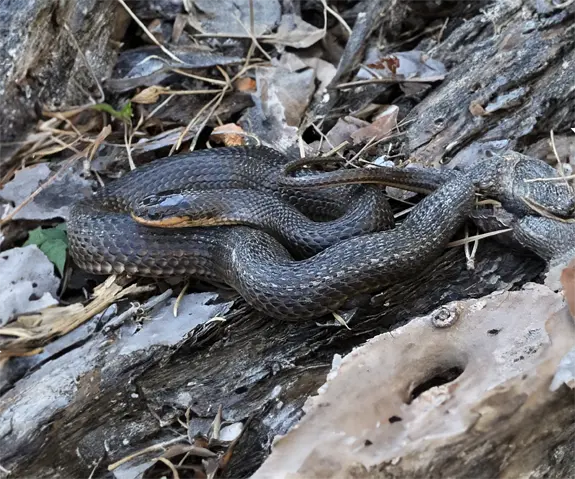
Photo 111169634 © bobzappalorti, CC BY-ND

Common Health Risks
Glossy swampsnakes pose minimal health risks to humans as they are nonvenomous and rarely bite when handled. However, a few precautions are advised:
- Musk: The foul smelling musk can irritate eyes, nose, and skin if discharged at close range.
- Bites: Bites are uncommon but can potentially become infected. Seek medical care if bitten.
- Parasites: Glossy swampsnakes host a variety of parasitic nematodes, flukes, mites, and ticks that could spread to humans by ingesting contaminated water. Avoid drinking untreated water from snake habitat.
Overall, glossy swampsnakes are not dangerous if left undisturbed in their natural habitat and posed minimal health risks. Their importance as both predator and prey outweighs any minor concerns.
Preventing Glossy Swampsnake Conflicts
Glossy swampsnakes primarily only enter developed areas when suitable wetlands are scarce or degraded. Follow these tips to reduce human-snake conflicts:
- Preserve wetland habitat and avoid draining or polluting swamps, marshes, ponds, and streams.
- Use creek fencing to keep snakes away from pools, fish ponds, or other exclusion zones.
- Seal gaps where pipes or drains enter houses to prevent accidental entry.
- Use pond netting when stocking fish to deter snakes.
- Leave snakes alone if encountered by chance; they are not aggressive.
- Call professional for humane removal if a snake invades an exclusion zone. Avoid killing harmless snakes.
With some basic habitat stewardship and excluding snakes from areas where they are unwelcome, glossy swampsnakes and humans can coexist with minimal conflicts in central Florida.
Glossy Swampsnakes in Central Florida – Conclusion
In summary, the glossy swampsnake is a shy, nonvenomous species that fills an important ecological role in central Florida’s aquatic ecosystems. Their specialized adaptations allow them to thrive in subtropical wetlands teeming with fish and frog prey. While timid and harmless to humans, habitat destruction threatens remaining glossy swampsnake populations. Preserving wetlands and coexisting with these beneficial snakes will ensure their survival and essential function as predator and prey in balanced freshwater habitats across central Florida.

